In 2017, Ine and myself travelled through Namibia for three weeks. “Namibia, that’s Africa, right?” It’s actually just above South Africa and west of Botswana. It’s also one of the least populated countries in the world, but still relatively easy to travel around. We decided to rent a gigantic 4×4 with a rooftop tent. This is what it looks like, Combined with 50% of our tour group:
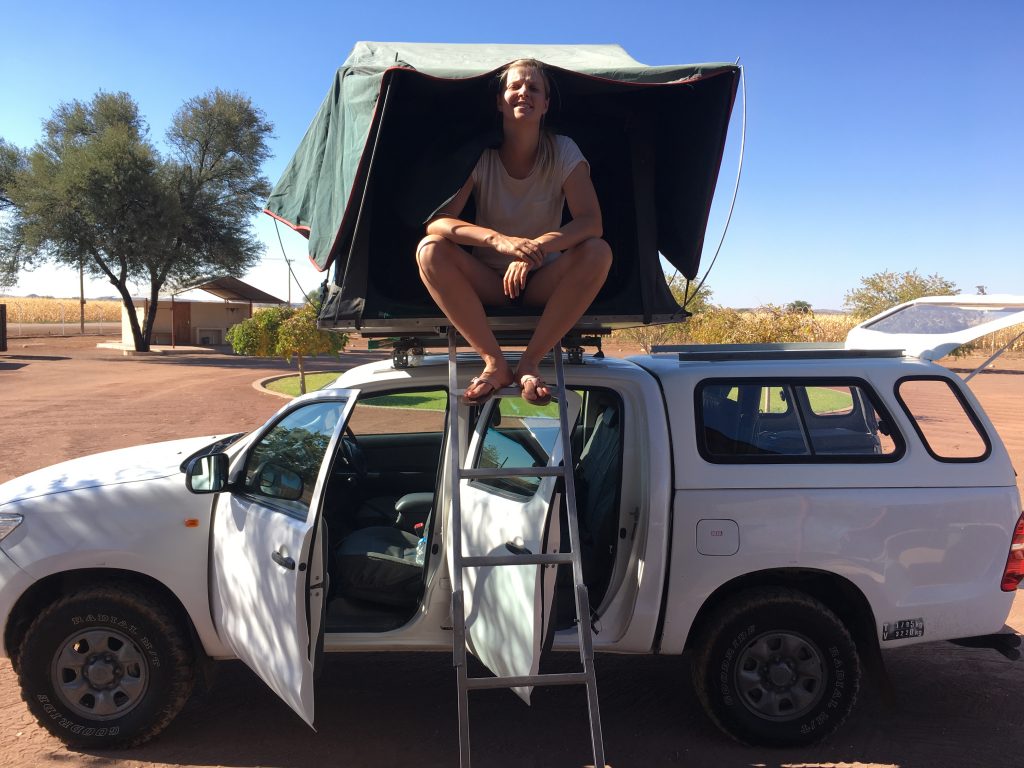
This seemed to be the best option because the only alternative is expensive lodges that would cost us 150-250 euros per night. The cost for renting our car with rooftop tent and camping equipment included was 1400 euros for three weeks. We paid an average of around 25 euros per night for a decent campsite. Read our other post for a full overview of the travel costs for 3 weeks in Namibia. Below, we share our travel route / itinerary and the highlights of our road trip through this amazing country.
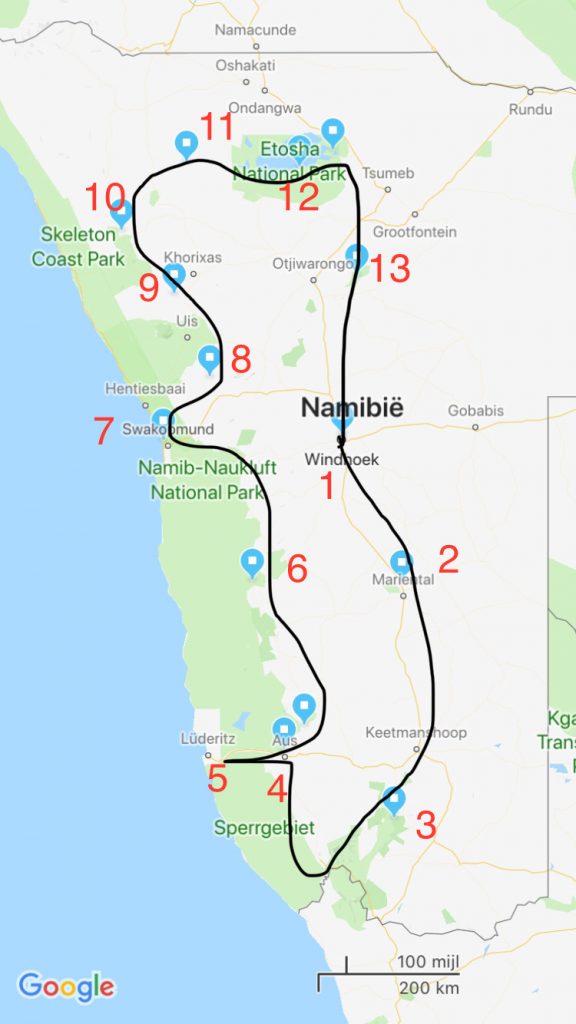
Our itinerary
0: The journey itself
What we remember most? The journey itself. The endless gravel roads, the locals, wildlife watching from the car, lighting a fire and bbq’ing late at night,… The experience of the two of us driving through Africa in a gigantic white car is something we will for ever remember. Also make sure to check out our overview of what to pack for such a trip.
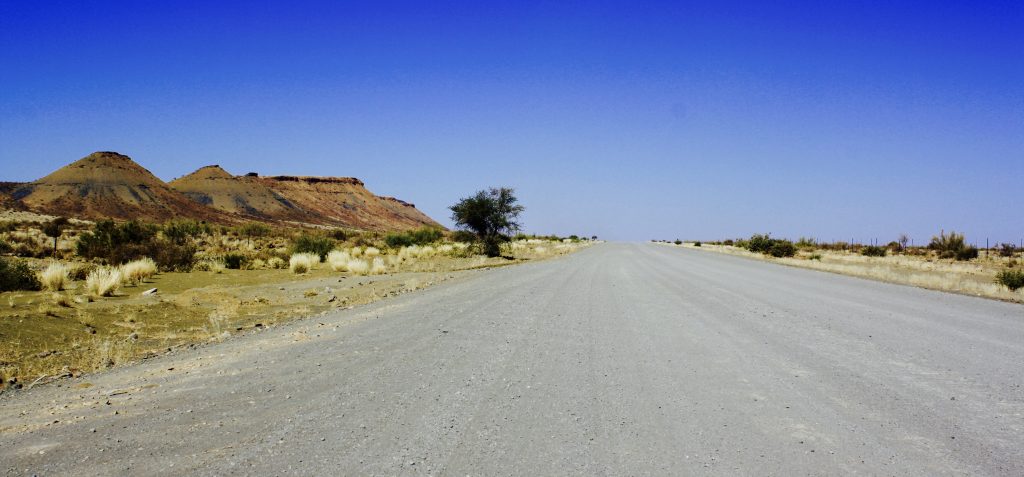
1: Windhoek
Capital of Namibia, very western. No highlight.
The only Namibian city that has an international airport. Also THE spot to rent a car and to shop for supplies for the rest of the trip. When finishing this, get out. Not because it’s unsafe or particularly unpleasant, just because the rest of the country has so much more to offer. Click here for recipes and supplies for 3 weeks of camping in Namibia.
- We stayed in: Kate’s guesthouse. Nice small hostel close to the centre of Windhoek. (3,5/5)
- Tip: Joe’s Beerhouse: The greatest meat fest of the southern hemisphere. Almost all non-endangered species that you can find in Namibia are being thrown on the barbecue here. Feels like the last Supper.
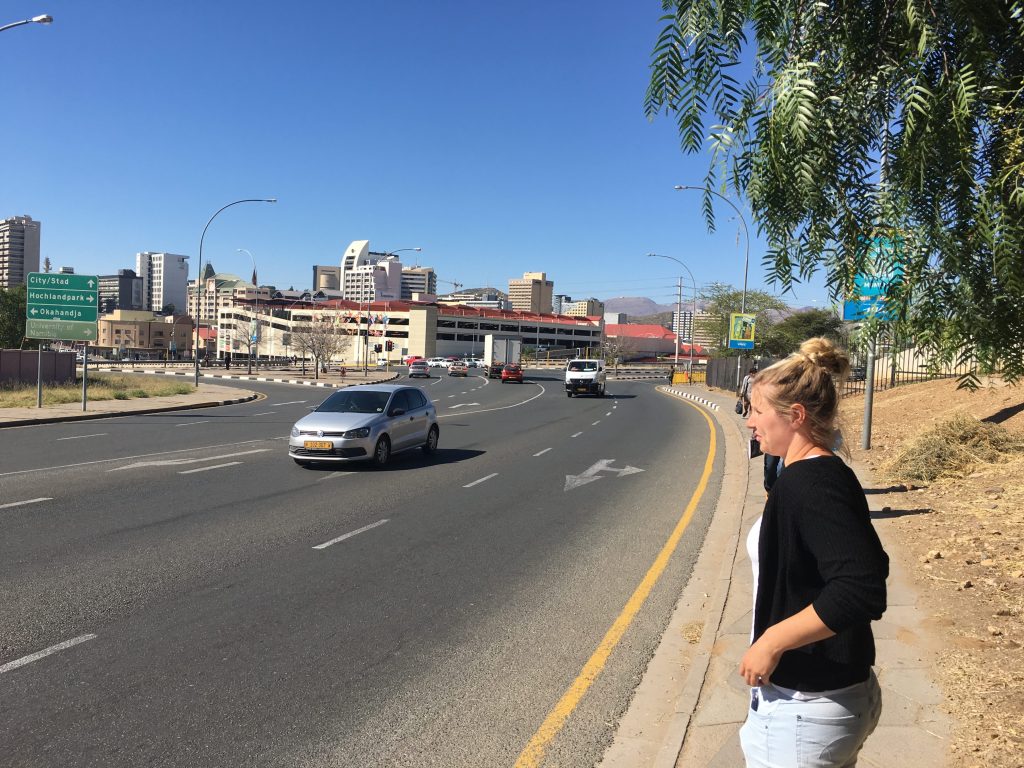
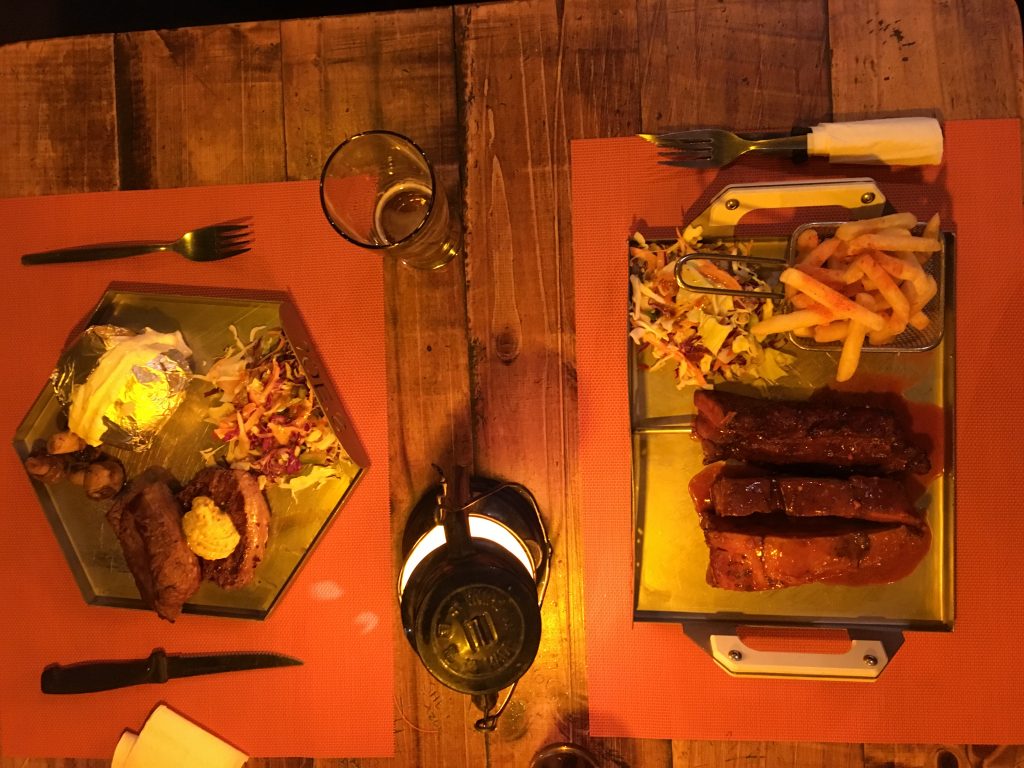
2. Mariental
First night in the rooftop tent
A small village with a campsite in the middle of nowhere. First time setting up the tent, first time making fire and using the braai. Already enjoying what is still to come…
- We stayed in: Bastion Farmyard.Remote and not very romantic campsite. We were the only guests. one of the best facilities with donkey boiler though.
- Tip: Don’t drive too fast on the first gravel roads. Your tires still have three harsh weeks to go.
3. Fish River Canyon
A gigantic hole in the ground. First real highlight of the trip.
The first real highlight of the trip. An hour away from our campsite, the first road signs to the Fish River Canyon appear. According to our Lonely Planet, it’s the second largest canyon in the world, just behind the Grand Canyon. That’s also where the comparison stops. Amount of people here: 0.
You can sit on the edge of this giant abyss and enjoy what seems to be the end of the world.
- We stayed in: Gondwana Canyon Roadhouse. Nice looking campsite with all facilities and a bar and restaurant for some drinks at night. (4,5/5)
- Tip: wake up extra early and go for a run on the hill behind the toilet facilities. Enjoy the view while recovering from the run.
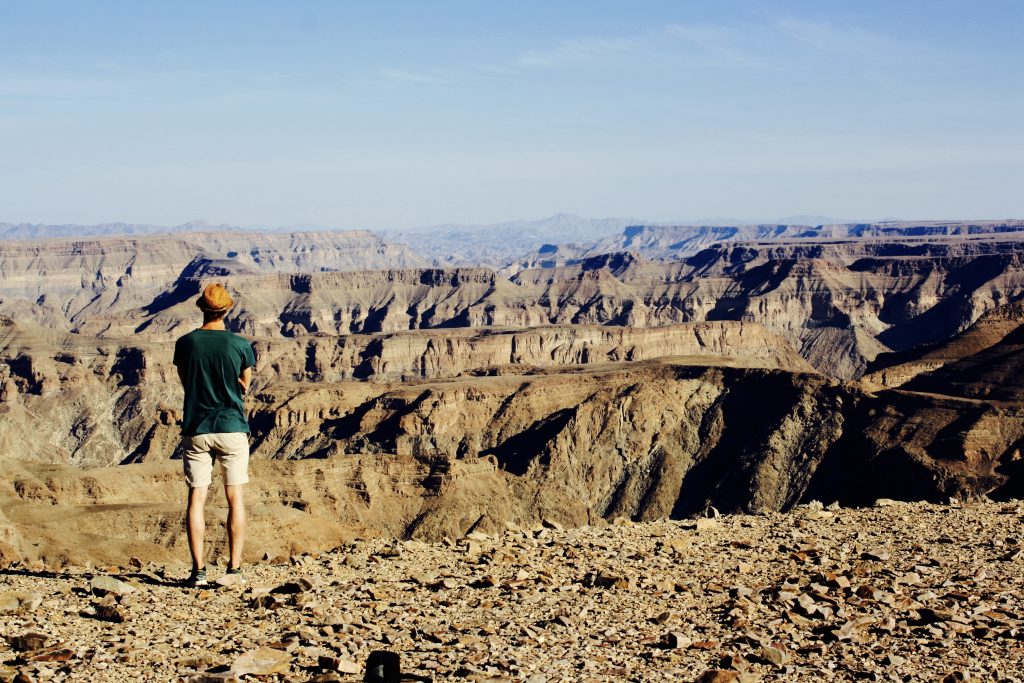
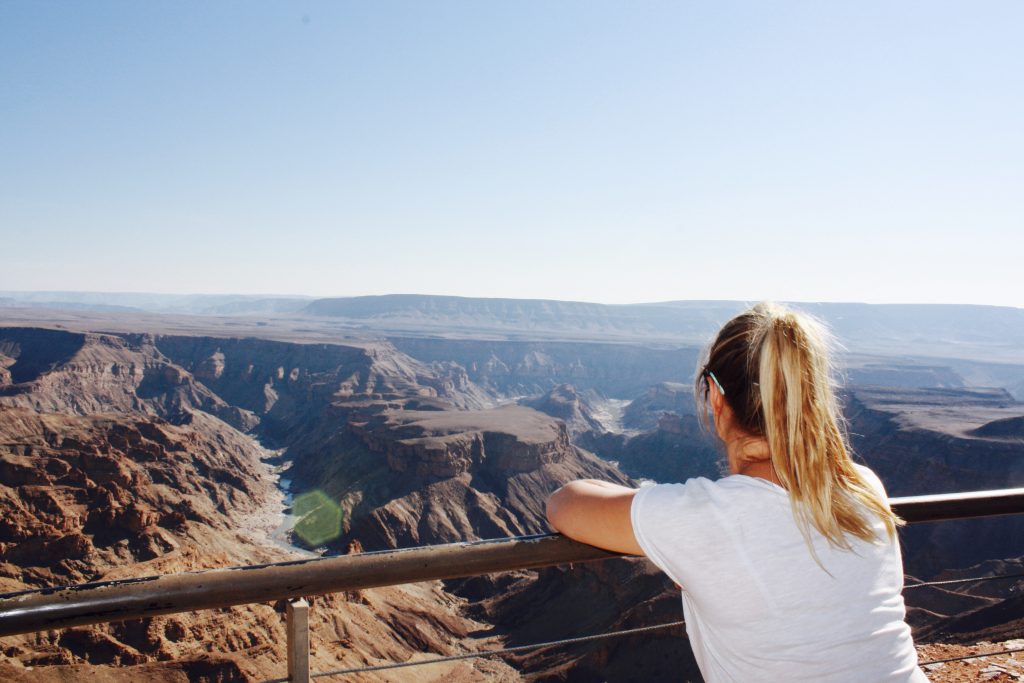
The view over Fish River Canyon 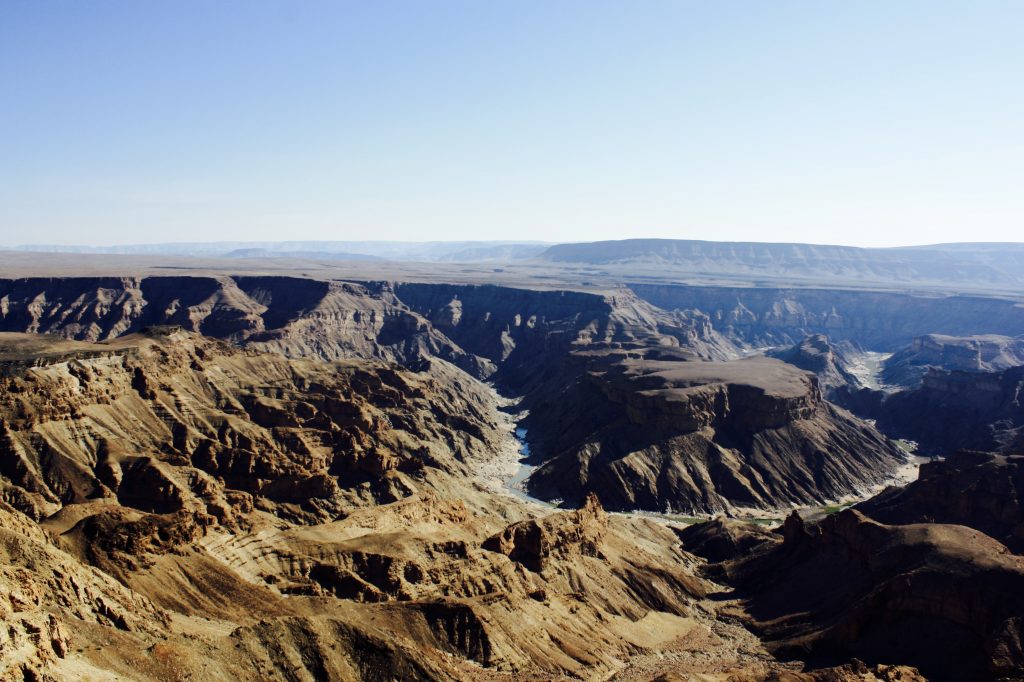
Fish River Canyon 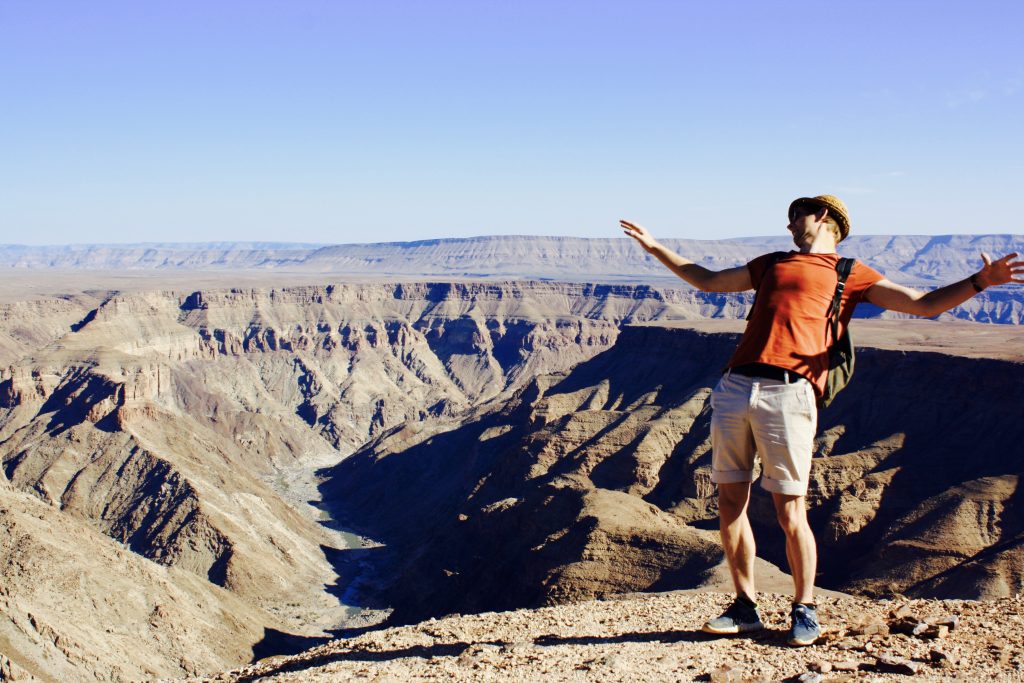
Fish River Canyon
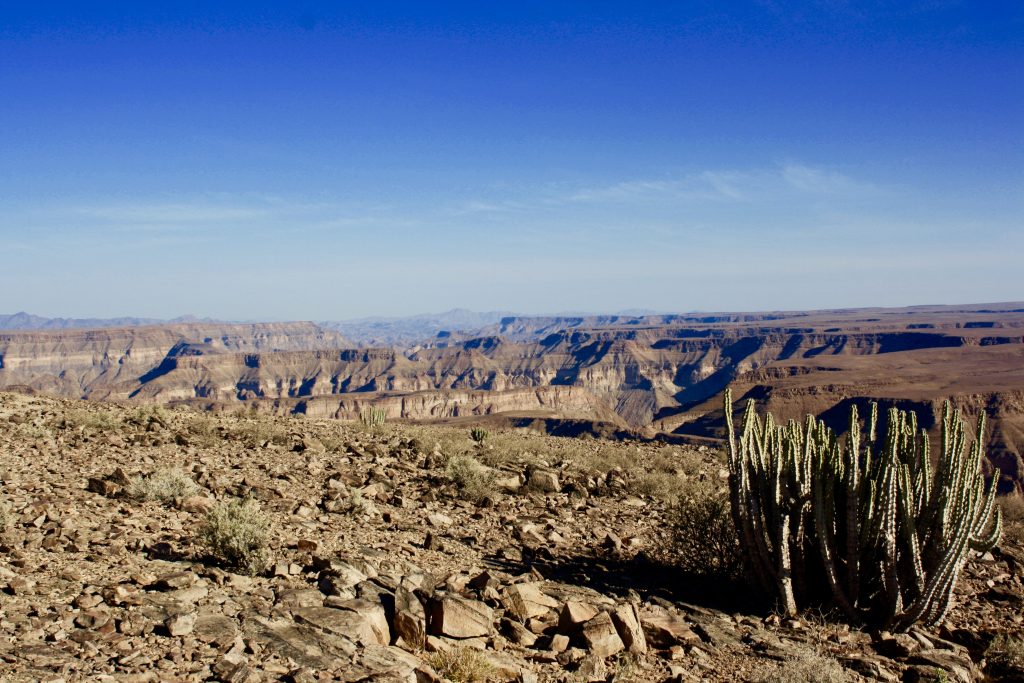
4. Klein aus vista
Wildebeest on the campsite and wild horses!
This wasn’t supposed to be more than a pit stop on our way to Lüderitz and Kolmanskop. In Namibia however, unknown places are often the most staggering. We drive in a landscape, pretty as a picture. We almost hit a kudu on our way to the campsite. Wake up-call, thanks a lot.
- We stayed in: Gondwana Desert collection Klein Aus. Beautiful campsite. Not the cleanest facilities, but the incredible views make up for it.
- Tip: After about 30km on the road to Kolmanskop, do stop at the only water hole around (there is a small sign). Oryxes guaranteed and a small chance to spot the last remaining wild horses in Africa.

Check out our other posts about Namibia as well:
5. Kolmanskop and Luderitz
ghost town and coastal town
Nothing is what it seems here. If an abandoned village, eaten by the desert in the middle of nowhere wasn’t strange enough, it also used to be inhabited by diamond-crazy Germans and their families 70 years ago. The entrance fee is almost free and the guided tours are completely.
Luderitz is an at ease coastal town. Kind of a relief after the strangeness of Kolmanskop though. Perfect for a good seafood lunch and some gas for the 4×4.
- We stayed in: Tirool Guest Farm. Quite campsite next to one of the most beautiful roads in the country. We were the only guests and had the amazing view for ourselves. A view to a whole lot of nothing. But a brilliant nothing. (4,5/5)
- Tip: A few hundred meters after leaving Luderitz, the is a sign on the right side of the road. It leads to a gravel road that goes on for tens of kilometres. Follow it all the way end you end up in what seems to be a different world. Moonlike landscapes, the Atlantic Ocean, Flamingo’s and a deserted lighthouse.
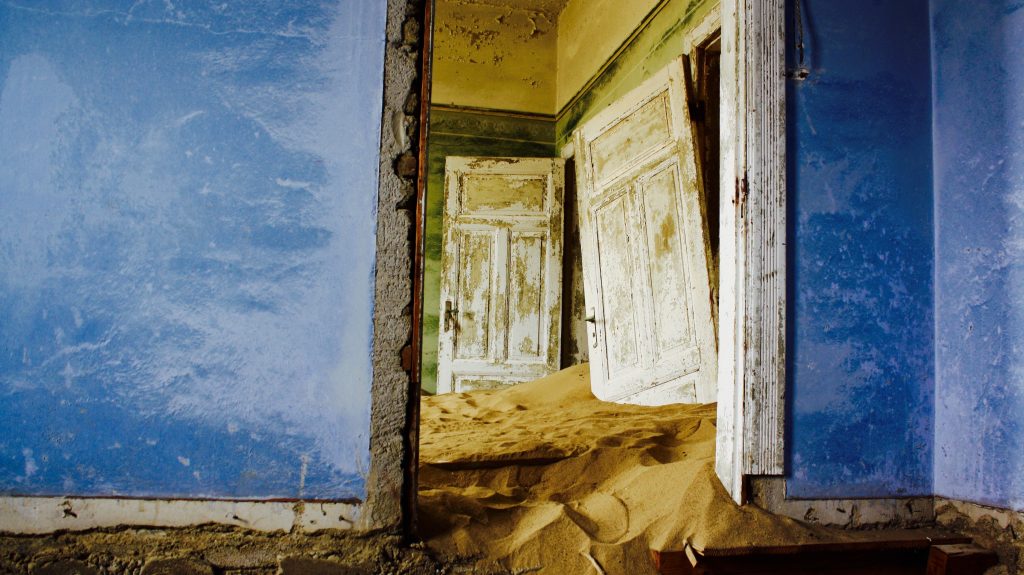
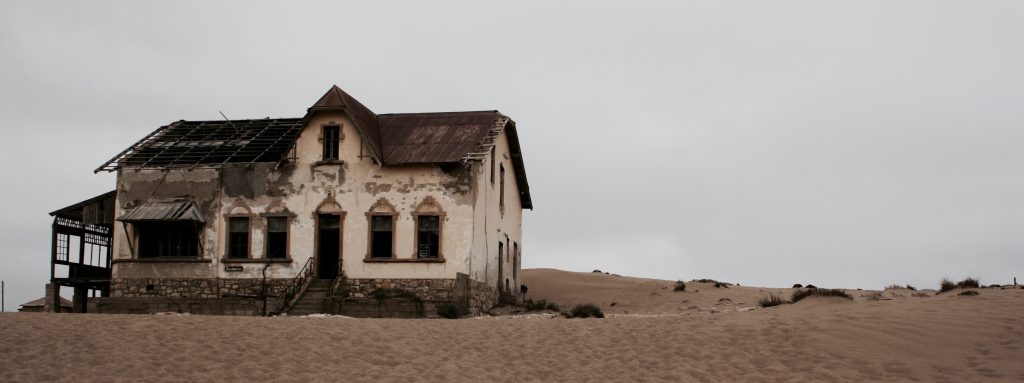
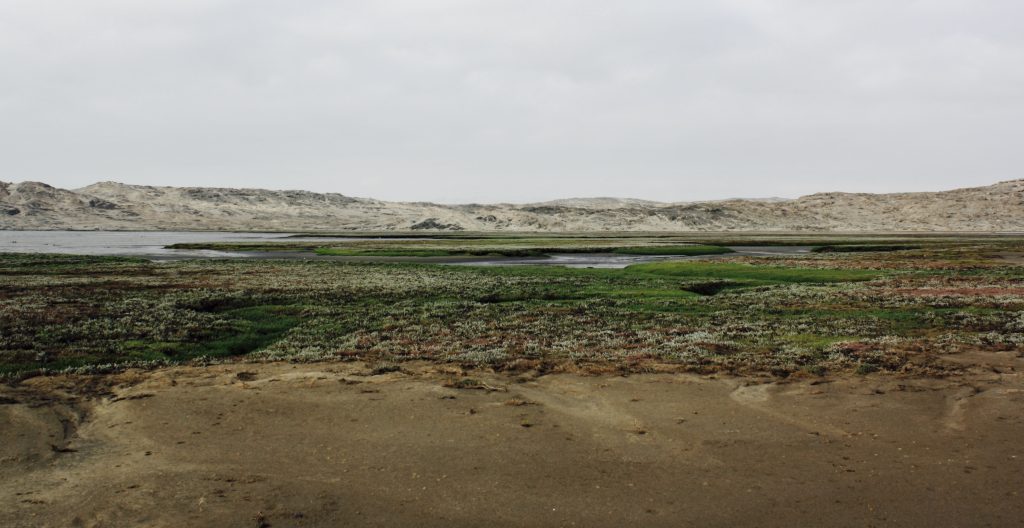
6. Sossusvlei
The desert, but not just a desert.
After seeing our very first wild zebras while driving through a landscape that looks different after every corner, we finally arrive near Sossusvlei in the Namib-Nauklauft National Park. We had booked a campsite just on the outside of the park. Although that was the cheaper option, we would miss the instafamous desert sunrise because the park wouldn’t open its gates before 9am. On the same day, we rebooked to a more expensive campsite in the park and boy that was worth it. Within the park also lies the strangest piece of planet earth we’ve ever stumbled upon. Deadvlei, a chalked piece of land in the middle of the desert full of dead trees.
- We stayed in: Sesriem Campsite. Good campsite with a nice relaxing pool and good restaurant. You do pay more than the Sossus Oasis Campsite that is located just outside the park. (4/5)
- Tip: the road from the campsite to the first desert dunes takes about 45 mins. To reach Deadvlei, count another 30 mins. The last part of that road is through loose sand. Expensive shuttles are a popular option. Bringing your inner Indiana Jones to life is another one. Make sure to decrease the tire pressure enough before heading into the sand and try not to drive slower than 20km/h because you might get stuck when driving slower.
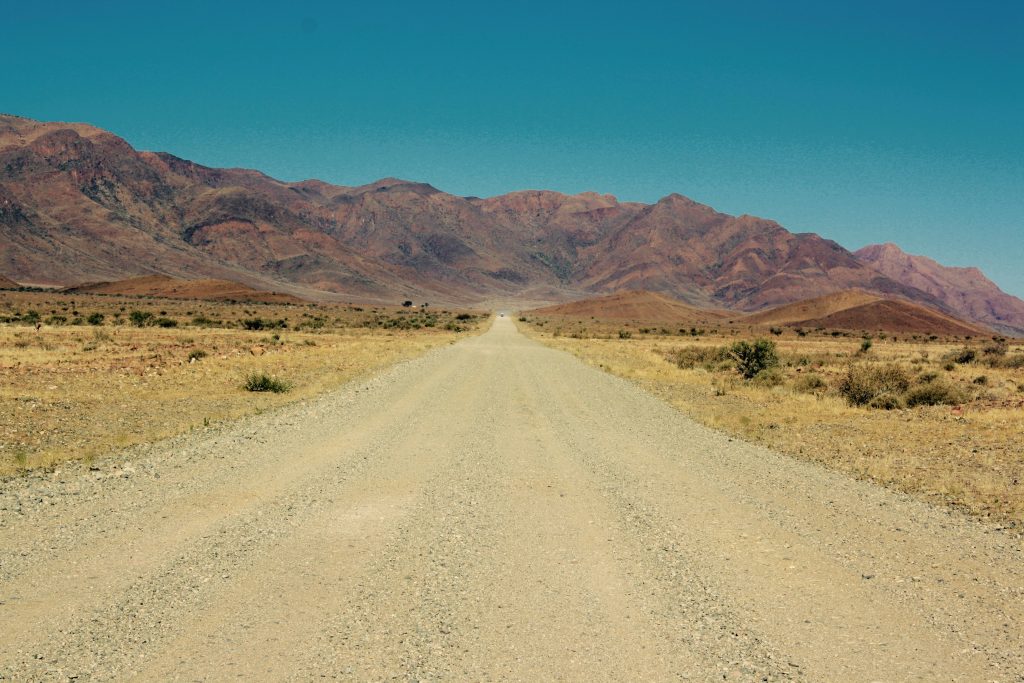
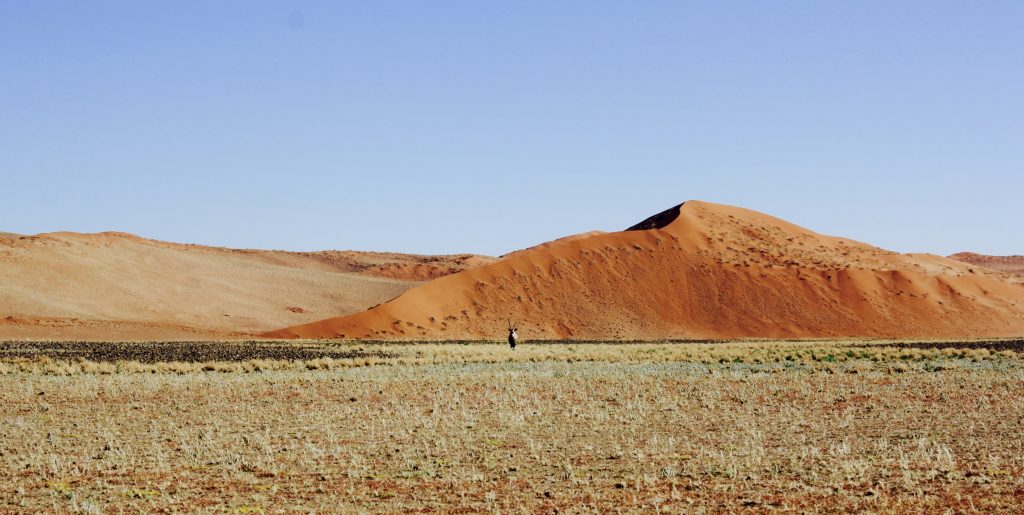
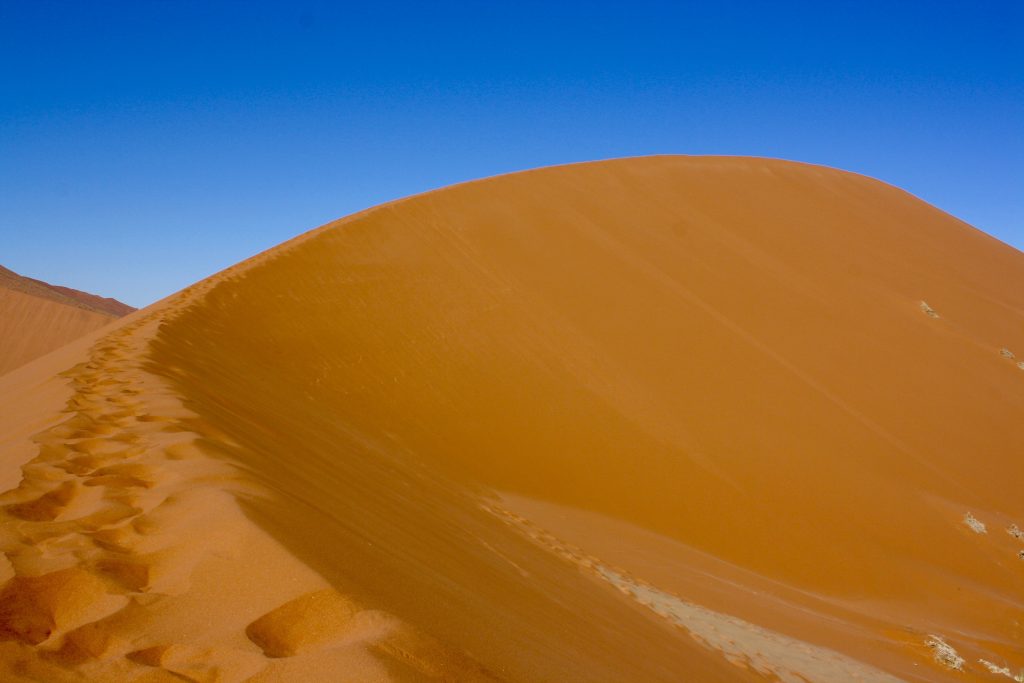
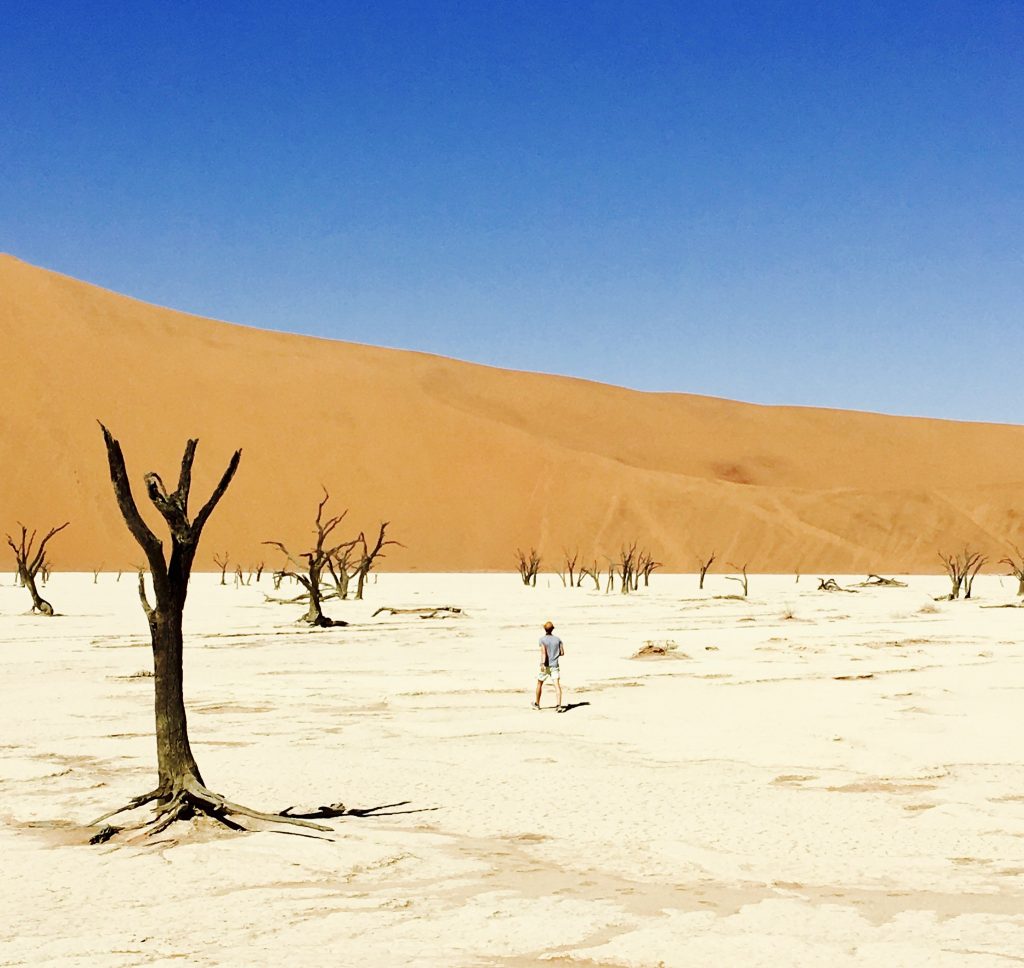
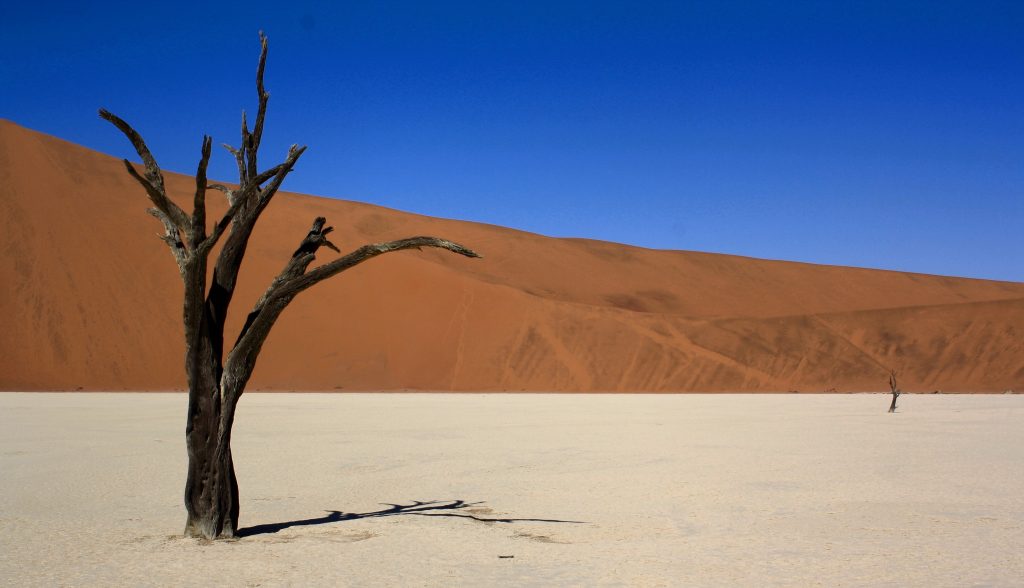
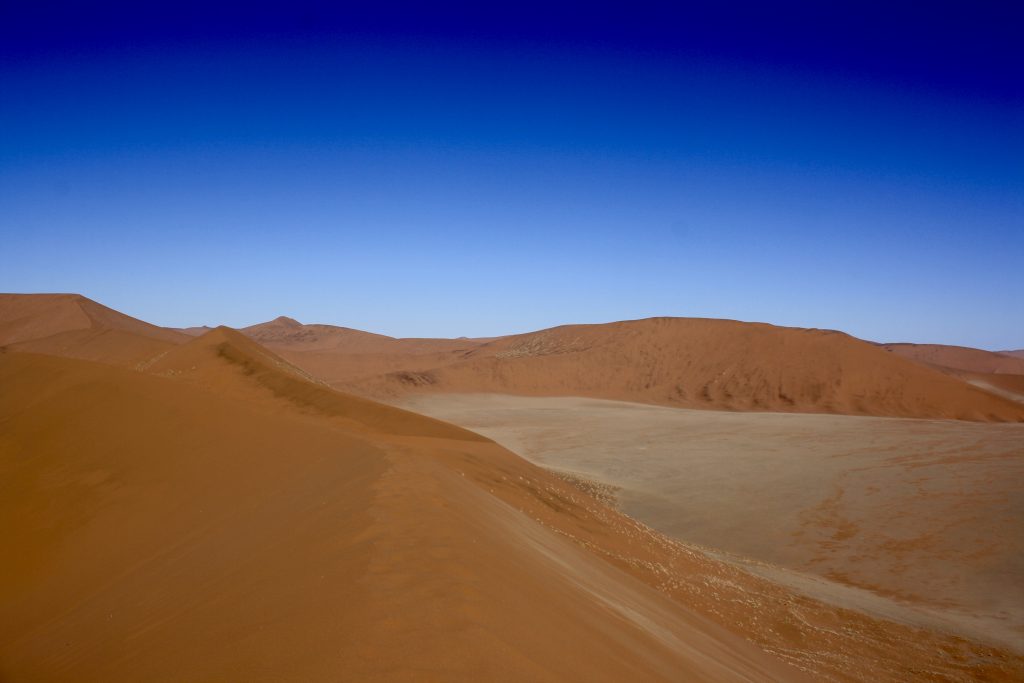
7. Swakopmund
Abandoned coastal town with German influence
In tourist guides, Swakopmund is being described as touristic centre of the country and second city in Namibia. When expecting that, Swakopmund is quite the dissapointment. Instead, we found an abandoned coastal town with strange colonial buildings in a ghastly atmosphere. Possibly we did arrive there in the wrong season though (May-June). The Schnitzel mit kartoffeln is still highly recommended. Looking back at it, Swakopmund wasn’t more than a grocery stop between the desert and northern Namibia.
- We stayed in: Skeleton Beach Backpackers. Fun hostel (with real beds!) and friendly owners. Just outside of the city centre, next to a gigantic sports complex. (3,5/5)
- Tip 1: The seafood restaurant on the peer of Swakopmund is incredible.
- Tip 2: Sandboarding. No chairlifts in the desert, so you have to walk all the way up the dune yourself. Fun to do, not exceptional.
- Tip 3: Drive north for about an hour and you reach Cape Cross where thousands of seals are waiting for you. Smell included.
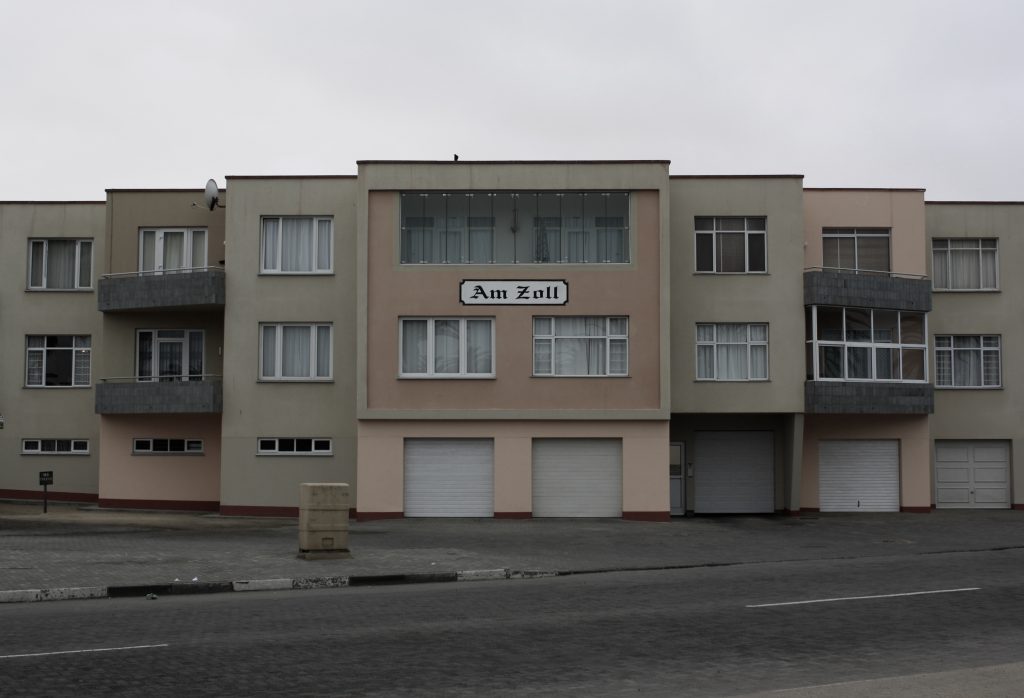
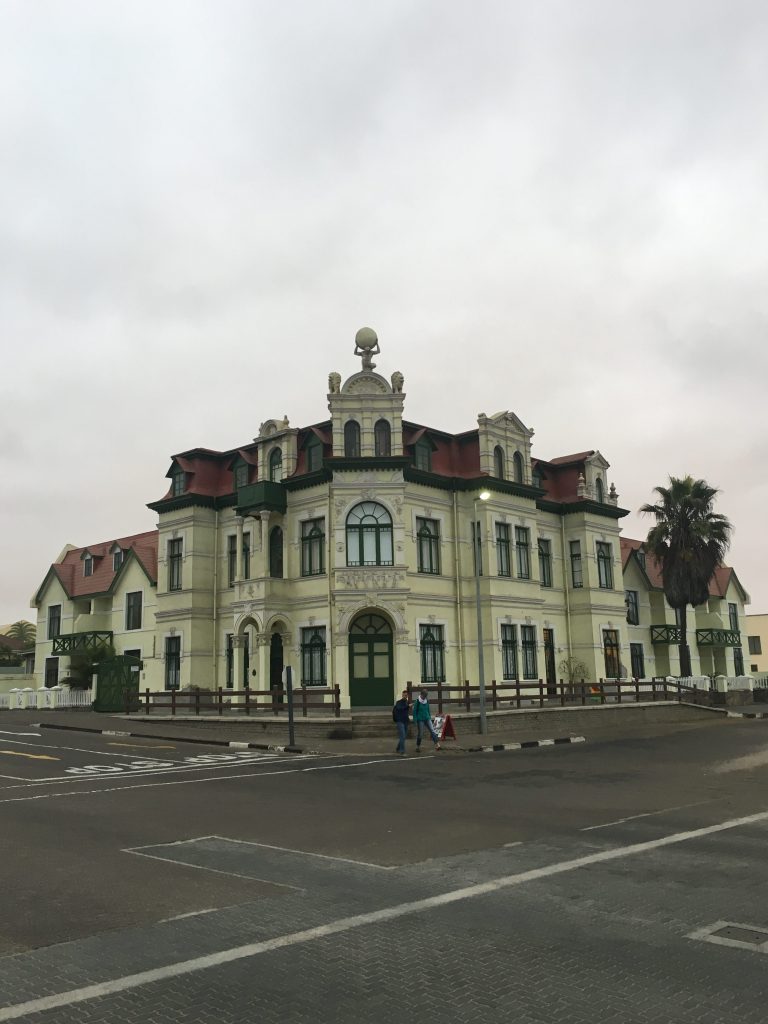

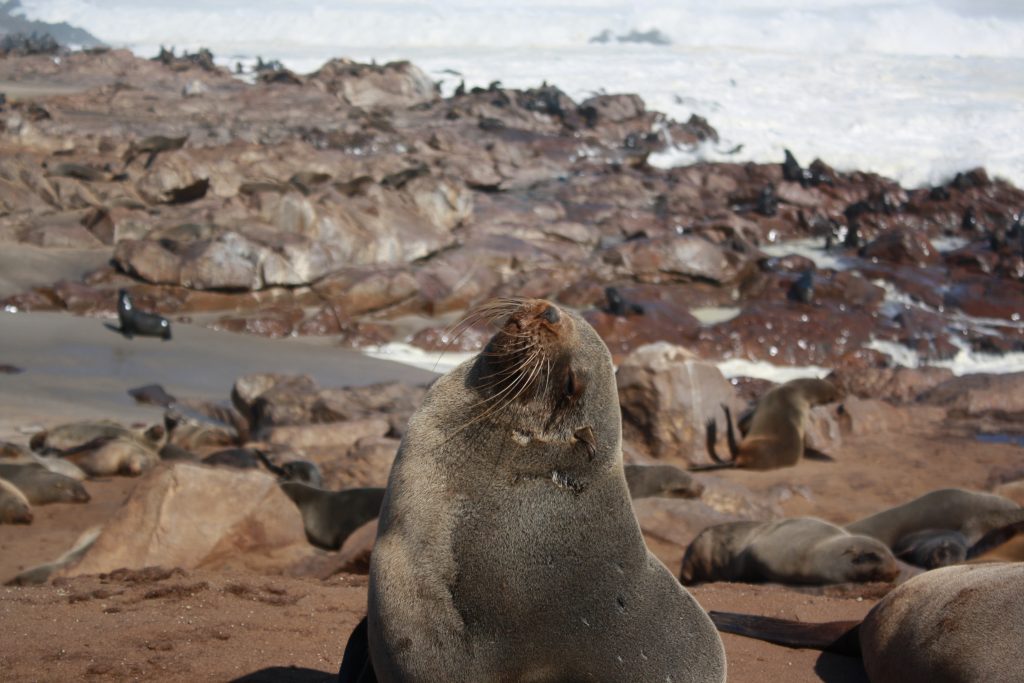
8. Spitzkoppe
Natural phenomenon with the most beautiful campsite of the trip.
Spitzkoppe is a granite mountain in the Namib desert that seems to stick out 700 meters compared to the surrounding landscape. the top of Spitzkoppe lies at 1800 meters above sea level. To reach this fantastic place, you have to enter a mini-national park. This park also includes the most beautiful campsite we have encountered. The locals have built around 30 sites spread around the park, each with its own toilet, shadow place and braai to make fire. You can pick one yourself and there are absolute beauties if you really go looking.
- We stayed in: Spitzkoppe restcamp. Pick a spot, make some fire and enjoy the quietness.
- Tip: Just before sunset, walk around the Spitzkoppe. Watching the sun set through the rocks and cracks in the landscape is a perfect ending of the day.
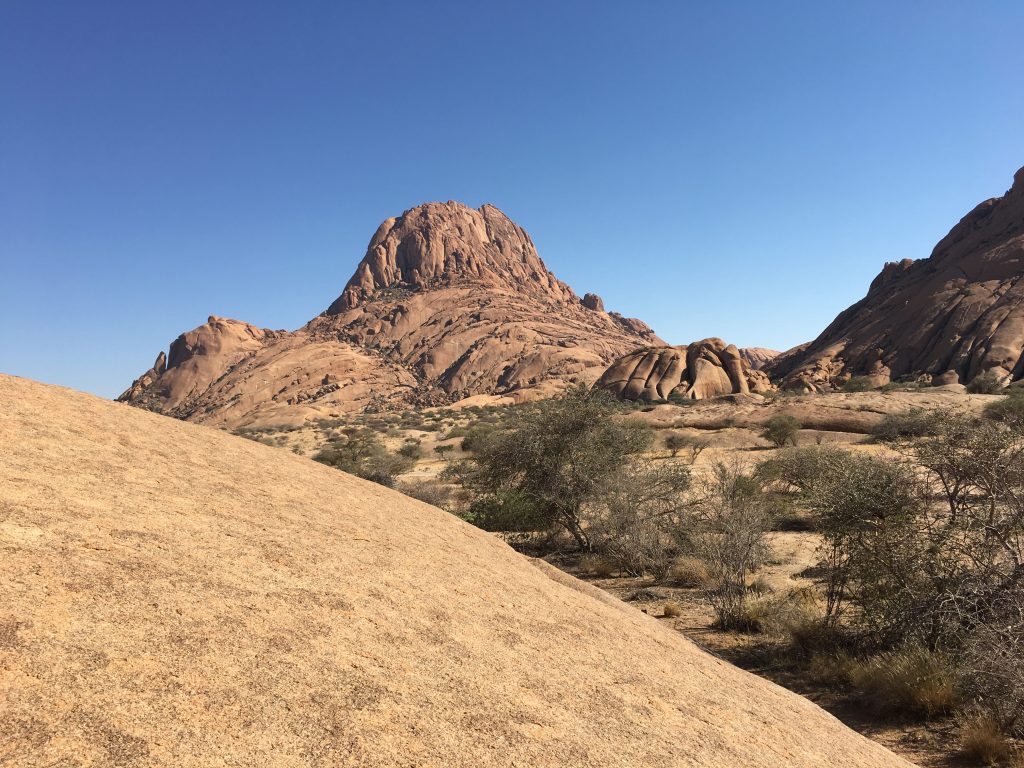
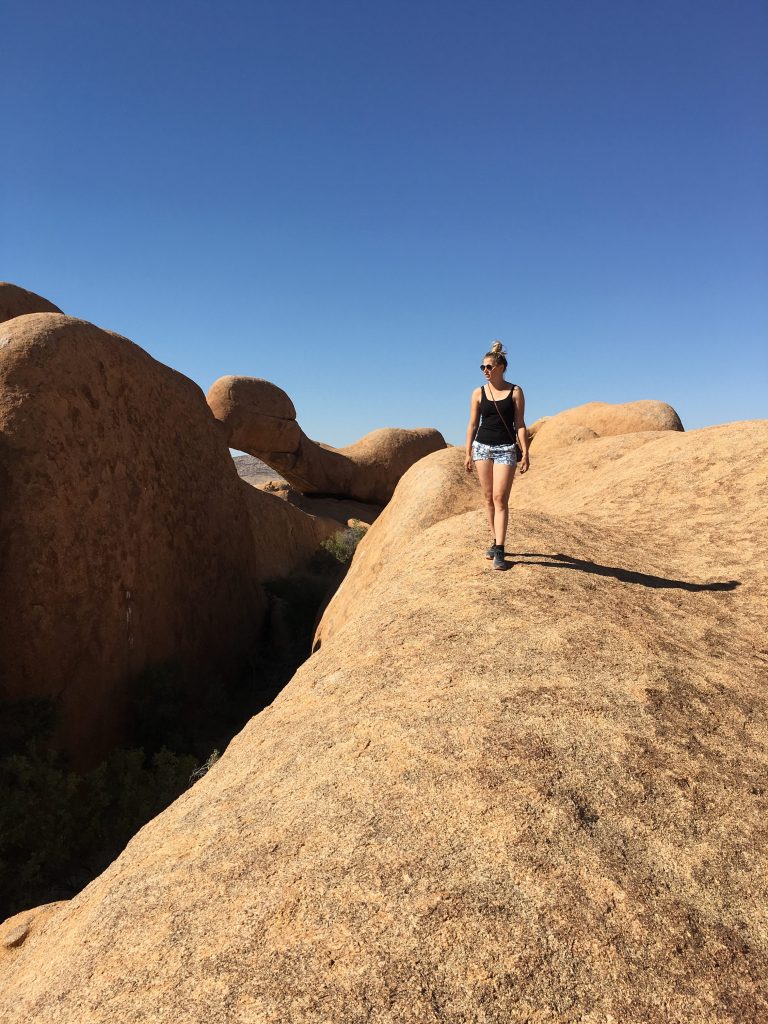
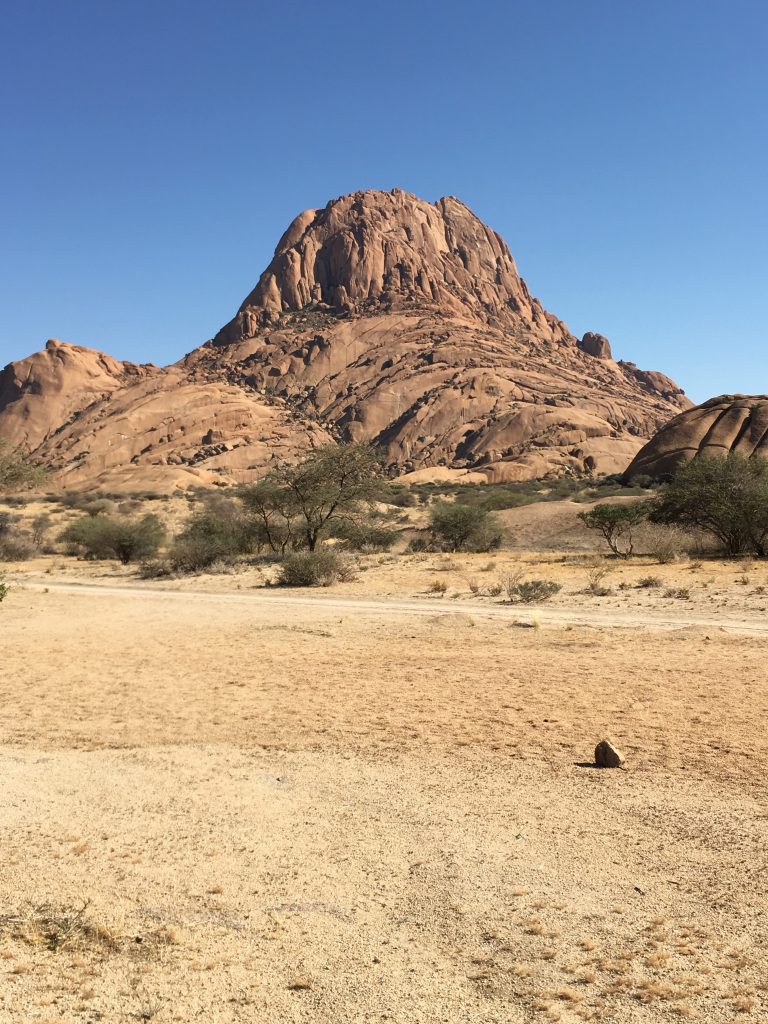
9. Twyfelfontein
Prehistoric site and must see village near the road
Twyfelfontein is being described as one of the main tourist attractions in Namibia. It definitely adds up to its name, but it does requires you to take some time to actually read about it. The one of a kind rock paintings are only worth it if you know the context. If you don’t, Twyfelfontein is nothing more than an average walk with too many people around you.
A few kilometers after the historic site, you can find een village showing scenes of how the locals used to live there. Much more interesting for us was to see how they live in present times, so we asked if someone could show us around. Not something you encounter every day because these types of villages are almost never next to the main roads.
- We stayed in: Madisa Camp. Very quiet place with large campsites. There is no firewood for sale nearby, only pressed wooden blocks that take ages to heat up. (4/5)
- Tip: Close to the village we visited, there is a dry riverbed used as a walking trail by elephants. We didn’t see any but if you have the time, go and take a look.
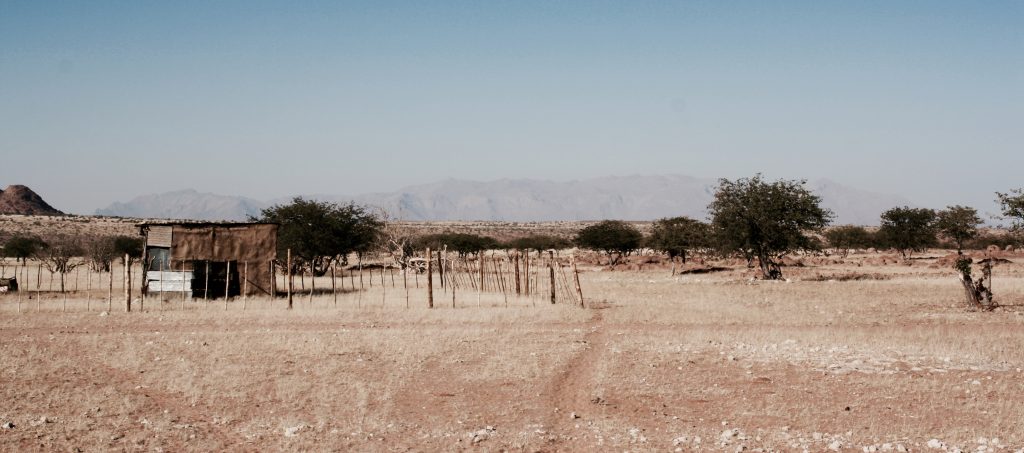
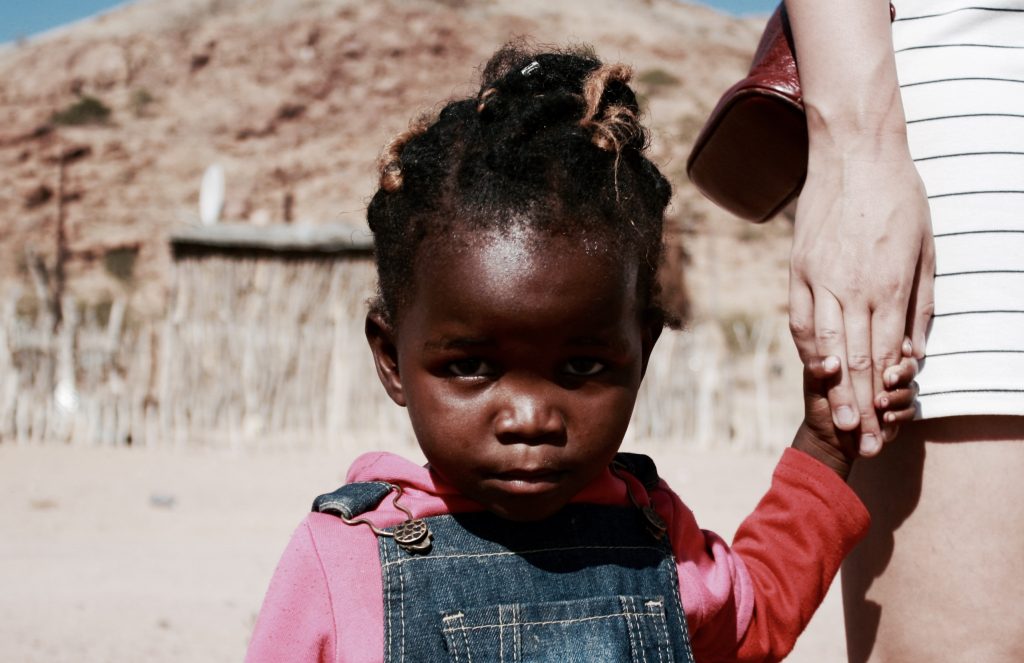
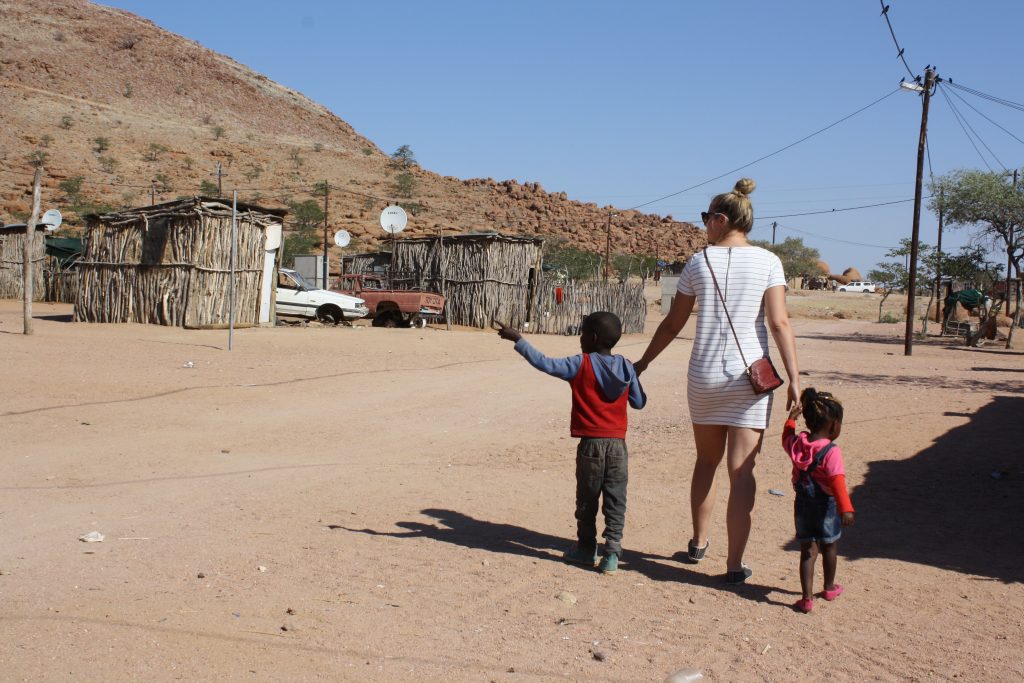
10. Palmwag
National park with extraterrestrial landscapes
Palmwag is located in a protected national park. When driving in and out, our booth was being checken and we were asked to leave all animal products at the gates (eggs, meat, milk,…). We planned this just as a stop before entering Etosha, but there are groups of tourists that stay here for a whole week. De landscape is beautiful and supposedly it’s full of wildlife, but all we got to see was one baby giraffe. We were over the moon though, because it was our very first wild giraffe.
- We stayed in: Palmwag Lodge. Fancy lodge with cosy campsites in the back. You can enjoy the two swimming pools and multiple restaurants that come with the lodge. (4/5)
- Tip: This is a tricky one. On the campsite, we were given a map to do a self drive safari in the park. We got lost after 1,5km and the jeep got stuck in the middle of nowhere. After driving terrible roads during the whole day we came back to the smiling young man that handed us the map. Beautiful views, but man we suffered that day.
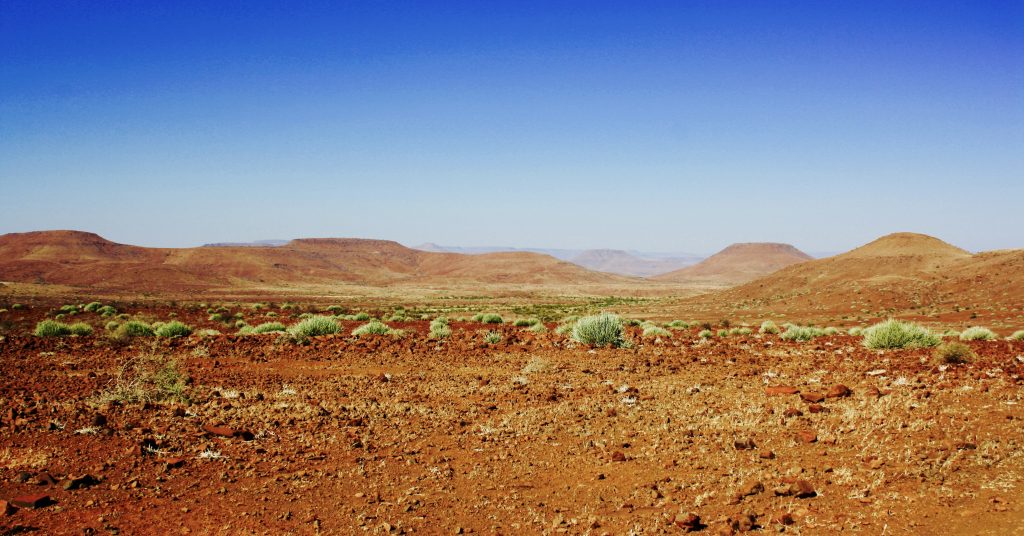

11. Olifantsrus Campsite
First campsite in Etosha National Park
This campsite is located right next to the western entrance of Etosha, the national park that we had been looking forward to for two weeks. It’s a camping-only site, so no wealthy and noisy tourists with ugly safari shorts here. There is a beautiful water hole by which you can spot different wildlife from two different heights. The name suggests many elephants, but the actual meaning is quite lugubrious. Back in the days when there were too many elephants, many were brought here to be slaughtered.
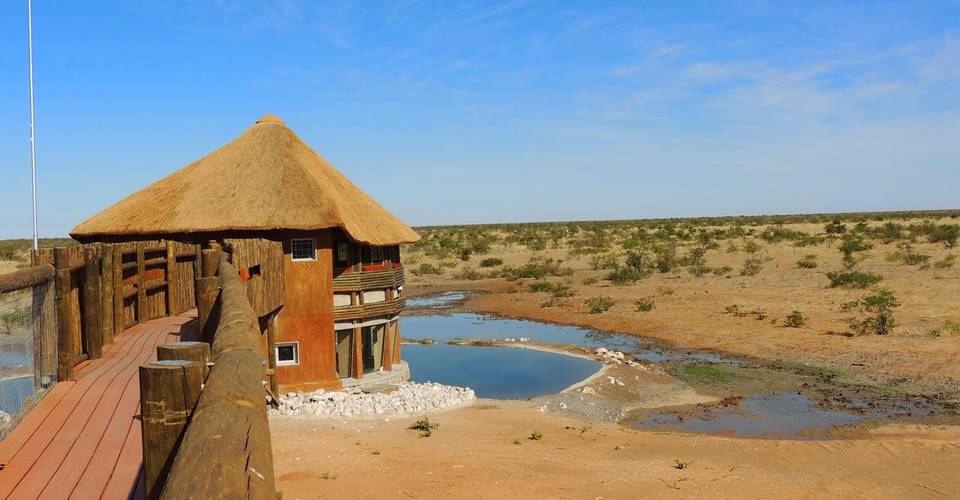
12. Etosha
THE highlight of our three week road trip
Before entering Etosha, we were over the moon with every breathing wild animal we came across in Namibia. And looking backward, ending in Etosha was the only right order to do this trip. If you start with Etosha, you’re being spoiled with wildlife from day one. This would make all wildlife spotting from the car in the first two weeks a lot less fun.
We’ve spent four days in the park, and we could have spent more. We stayed on a different campsite every night. All of them have waterholes and options to book guided safaris. We didn’t do any, because we still felt super excited with each animal we came across on our own and for free. This us just a unique part of the planet on which you can view the most incredible animals on earth in all their glory. Each day after breakfast, we packed our things and hit the road for around five hours. Arriving at the next campsite (driving in the dark is forbidden btw), we set up the tent, bought something to eat, lit the fire and the rest of the night was reserved for reading and wildlife spotting at the waterhole.
To check which animals we have seen in Etosha, read our article about 4 days in Etosha. We stayed in:
- Halali Campsite: Proud owner of the most beautiful and cosy waterhole we’ve seen. Wait, read a bit, wait a little longer and spot rhinos in all their glory.
- Namutoni Camp: Nice and clean campsite in the middle of a Colonial site that has seen better days.
- Tip: Don’t skip a single waterhole during your drives in Etosha. Check Google Maps and the road signs to find them. There is only one main road in the park. You’ll come across more than enough places to spot animals when staying on that main road. Do not forget your binoculars.
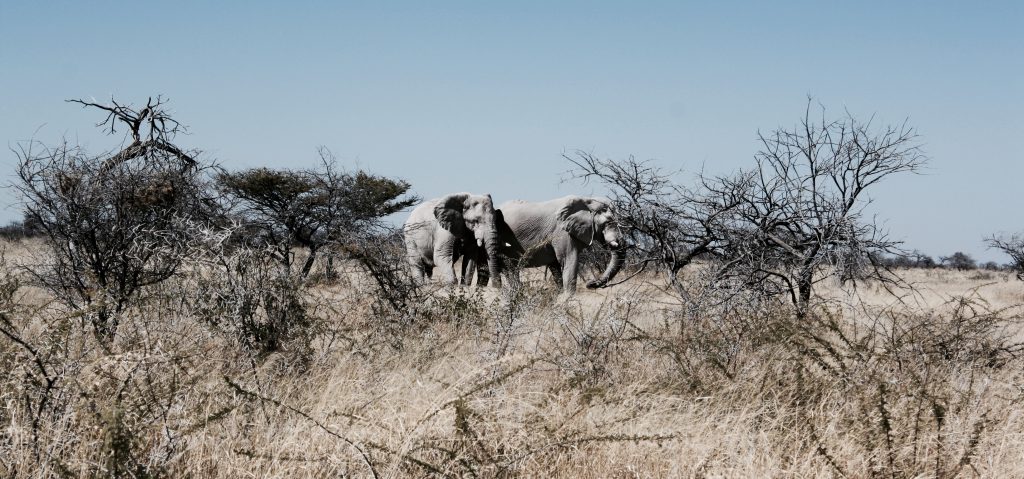
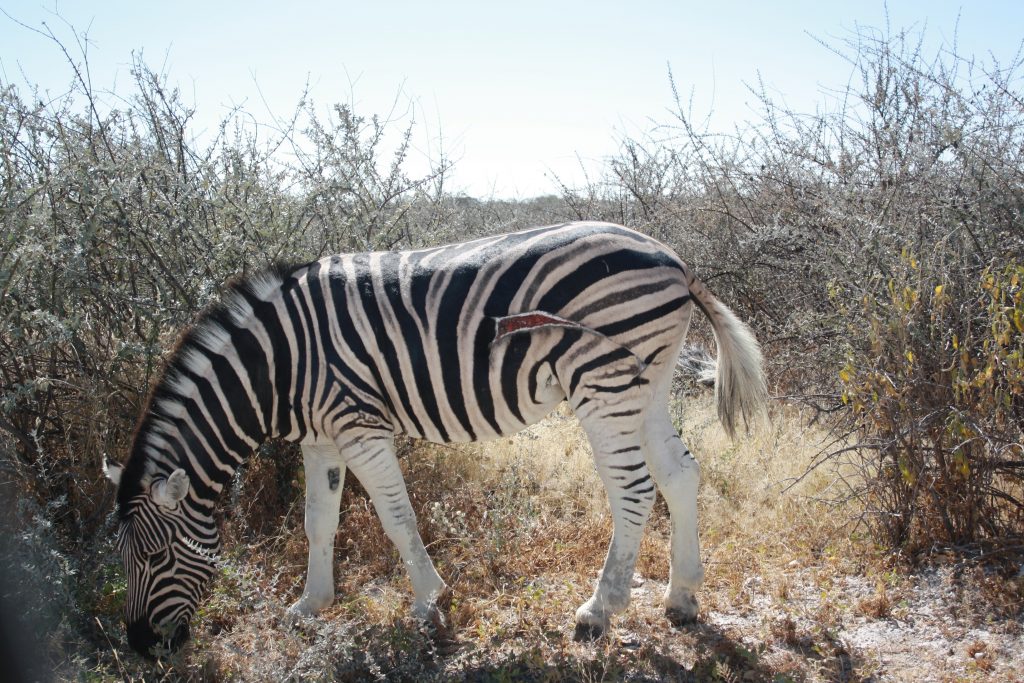
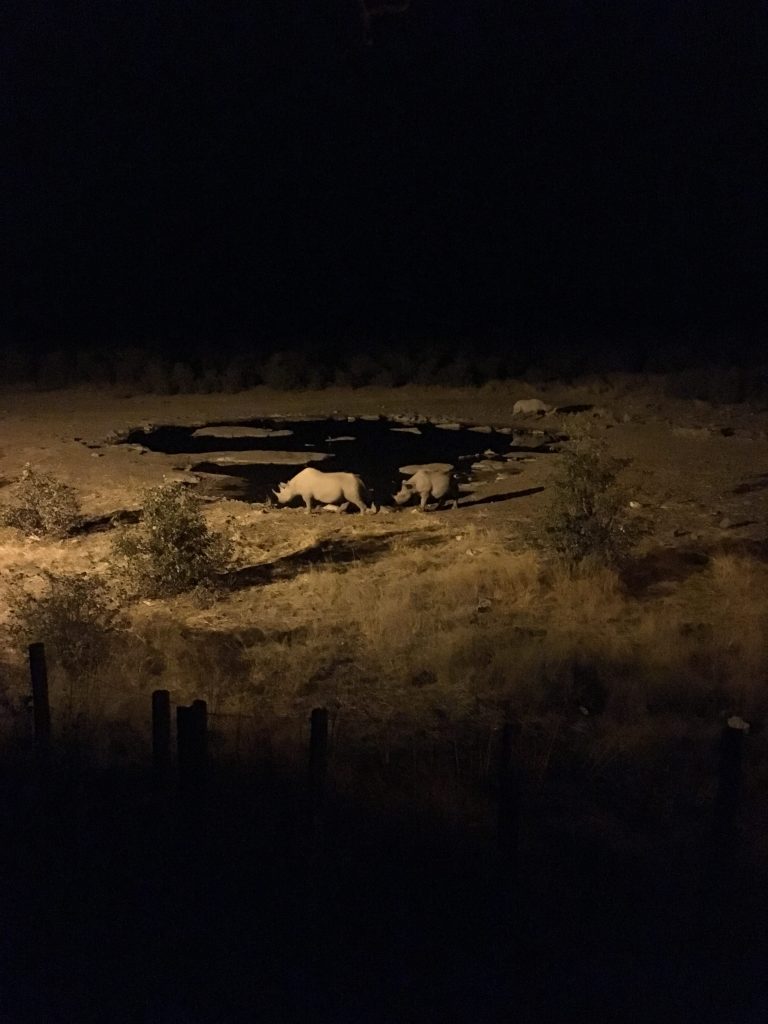
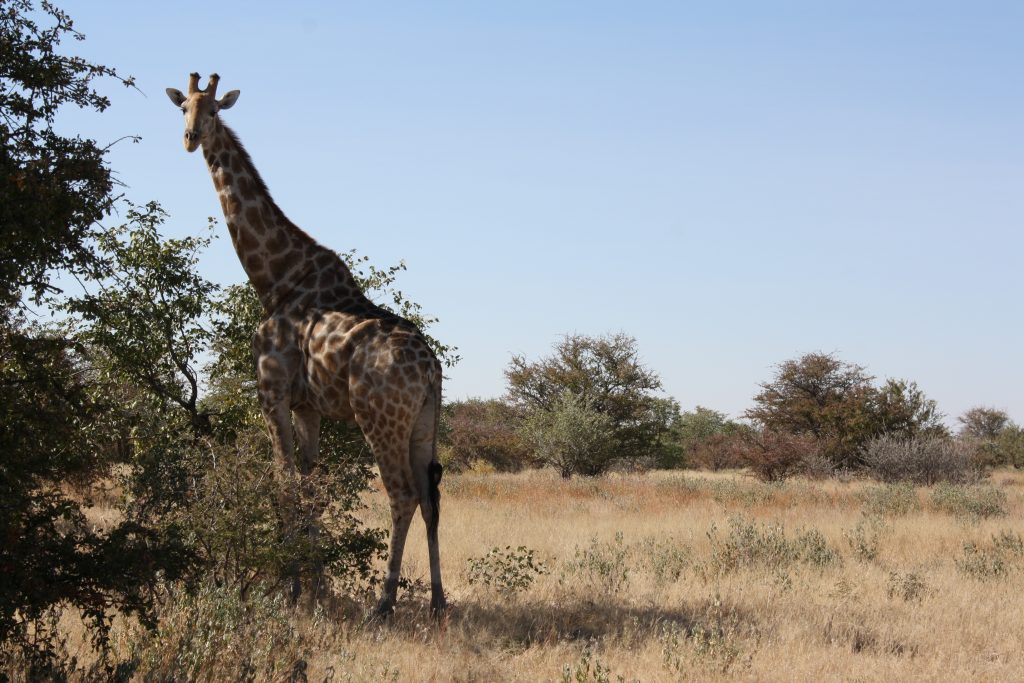
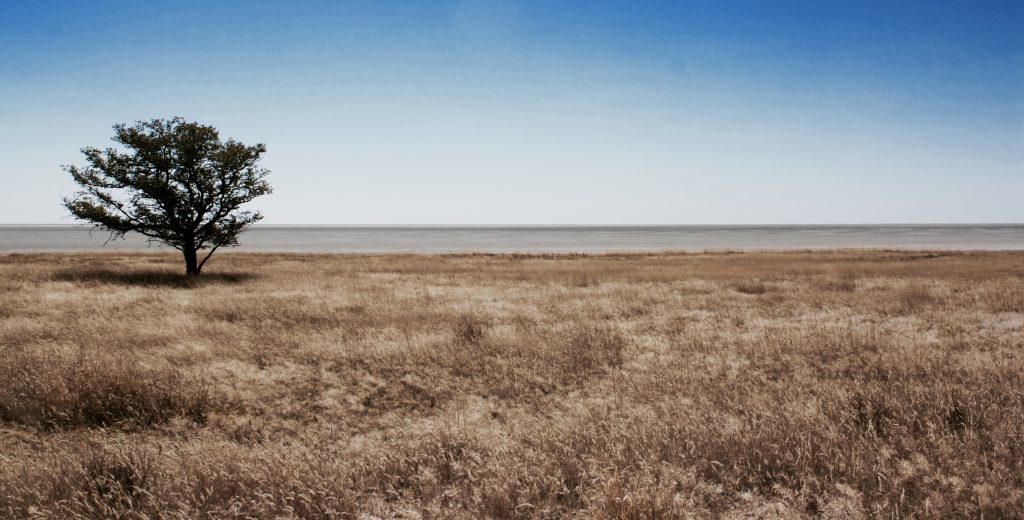
13. Waterberg
National park with amazing views
When leaving Etosha, you might think that you’ve seen it all. Think again. Waterberg National Park lies right between Etosha and Windhoek. Many tourists skip this last stop and go straight back to the capital. They’re wrong. Waterberg National Park offers unique views from an out of this world plateau and a beautiful campsite right in the middle of nature. Clean bathrooms and a swimming pool included. In the evening, take a walk to the fancy lodges and nearby restaurant. The view is amazing and the food was just perfect. The price for a meal is very campsite-like though.
- We stayed in: Waterberg Plateau Campsite. Top Campsite with an amazing restaurant a couple of hundred meters down the road. (4,5/5)
- Tip 1: on the campsite, you can book a guided walking safari on top of the plateau. We only spotted a giant Kudu, but the walk itself on top of the plateau alone is worth the very fair price.
- Tip 2: an hour away is the Cheetah Conservation Fund. This is an NGO that is fully committed to protecting Cheetahs in the region. Spotting them in captivity is not the same as in the wild, but they remain majestic creatures. The tourist shop is a bit over the top, but it works. And the money is very well spent. Who doesn’t want a plastic Cheetah for 25 euros?
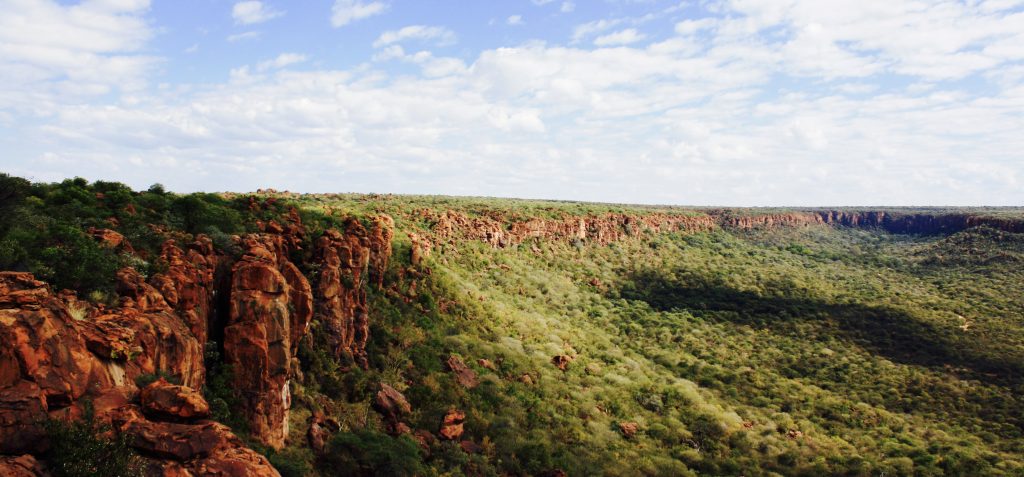


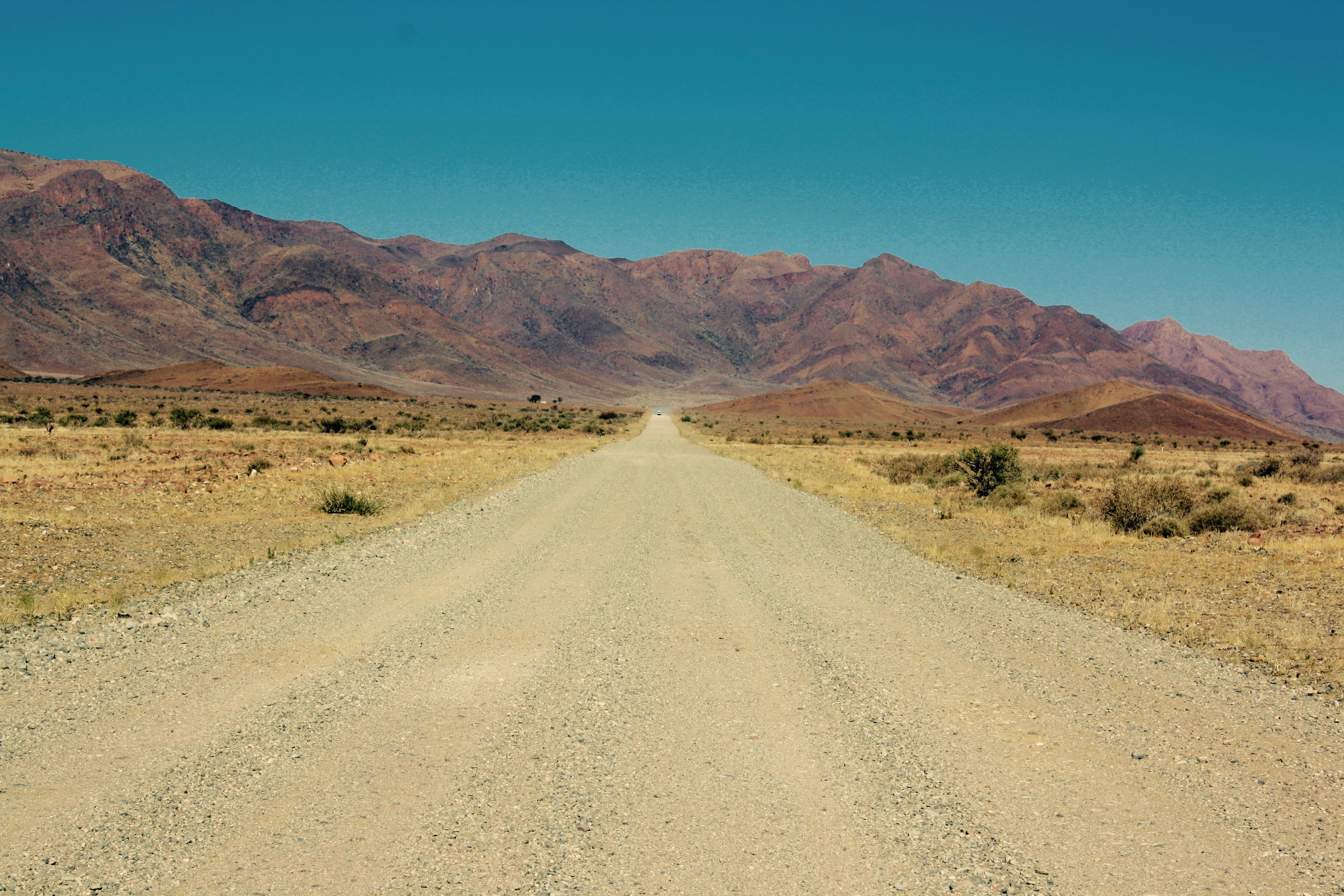
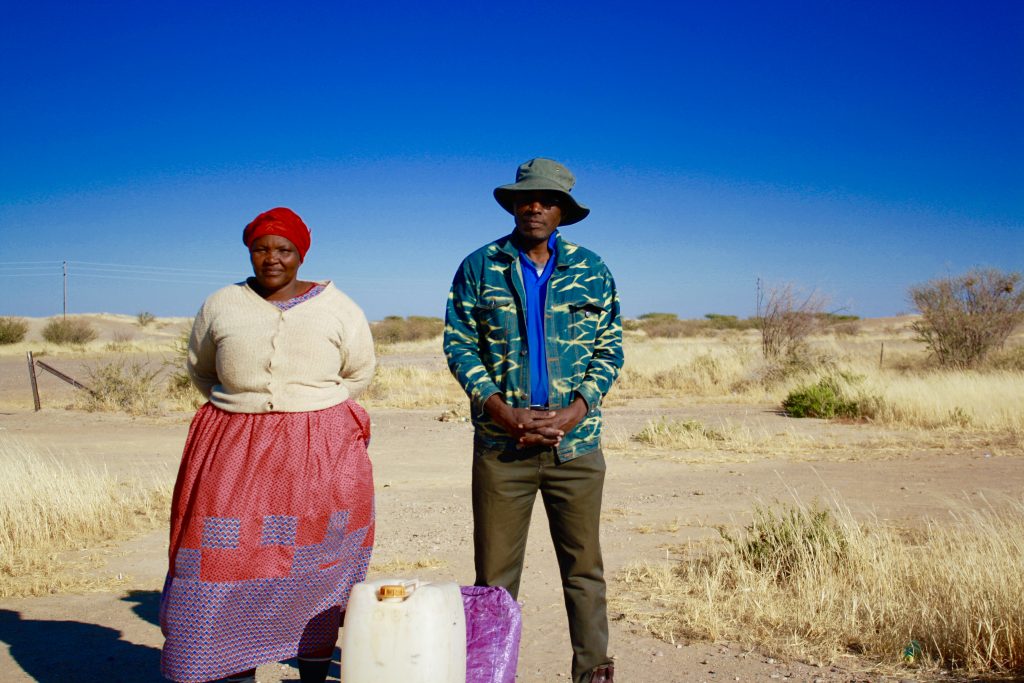
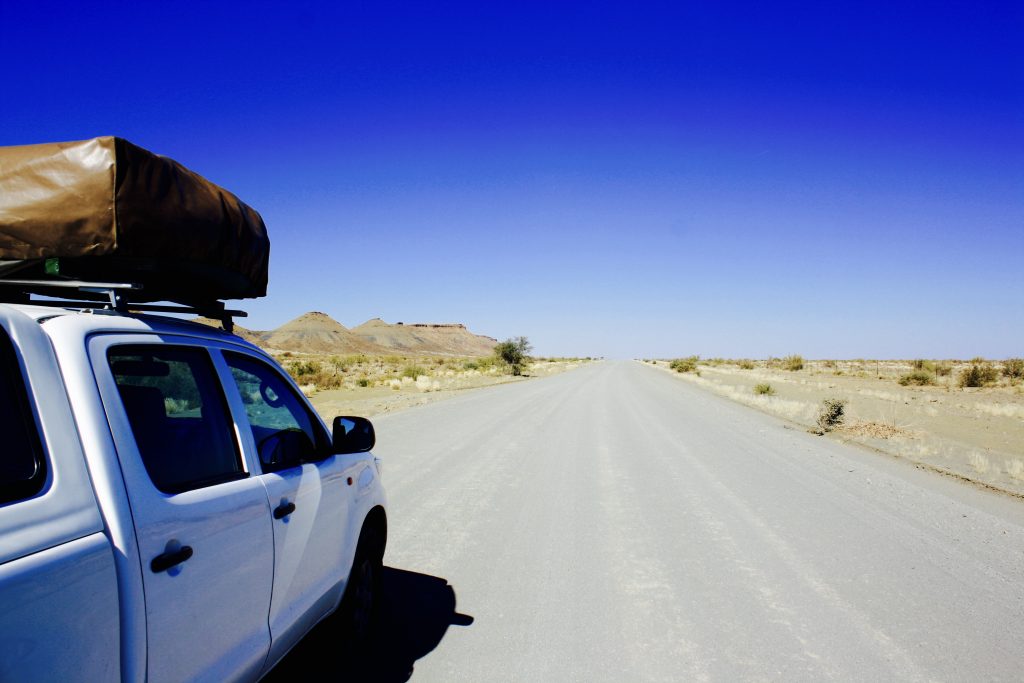
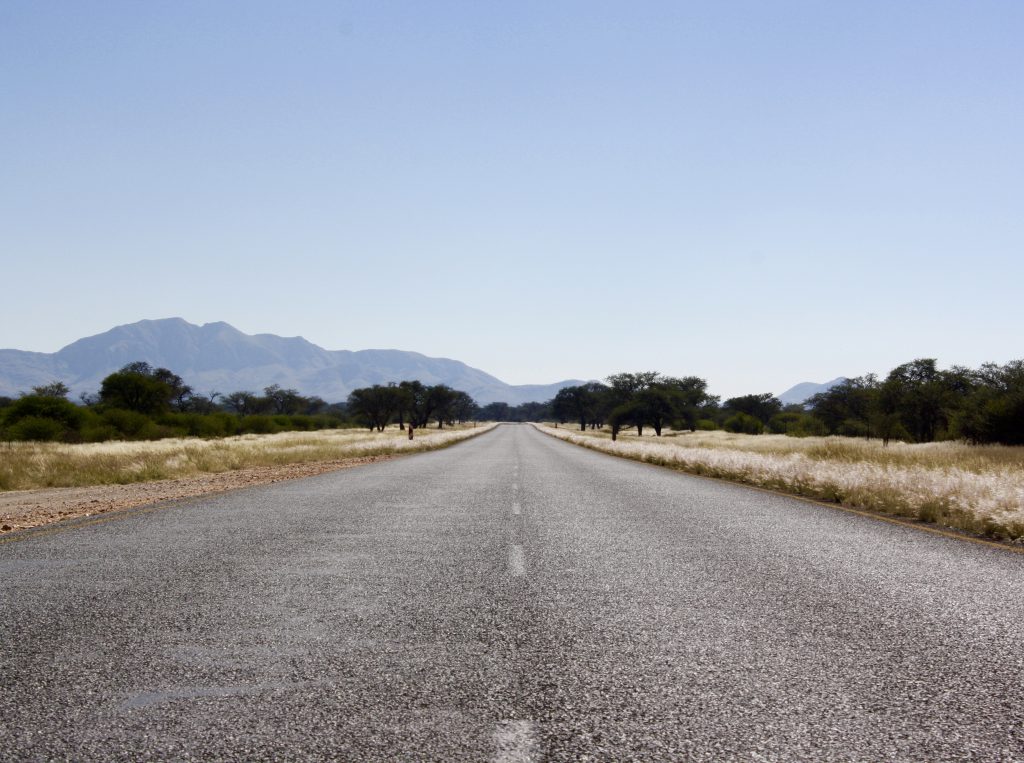
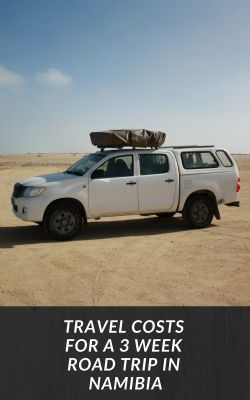
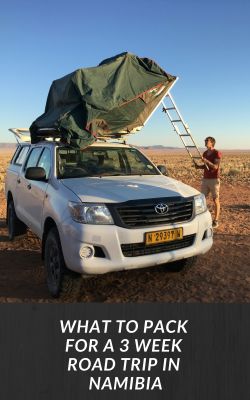
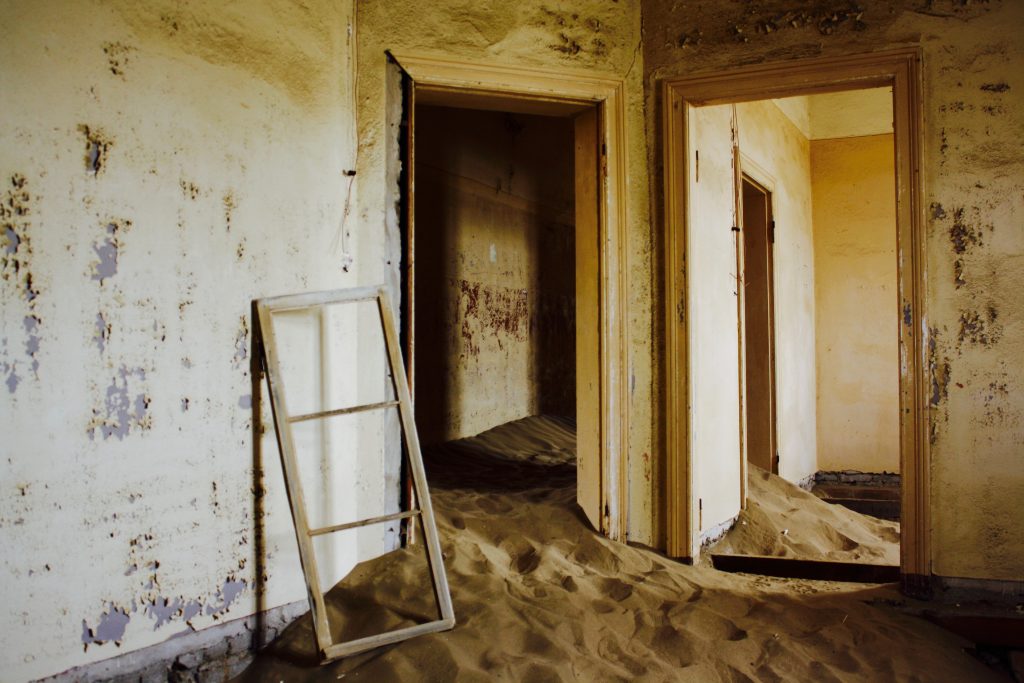
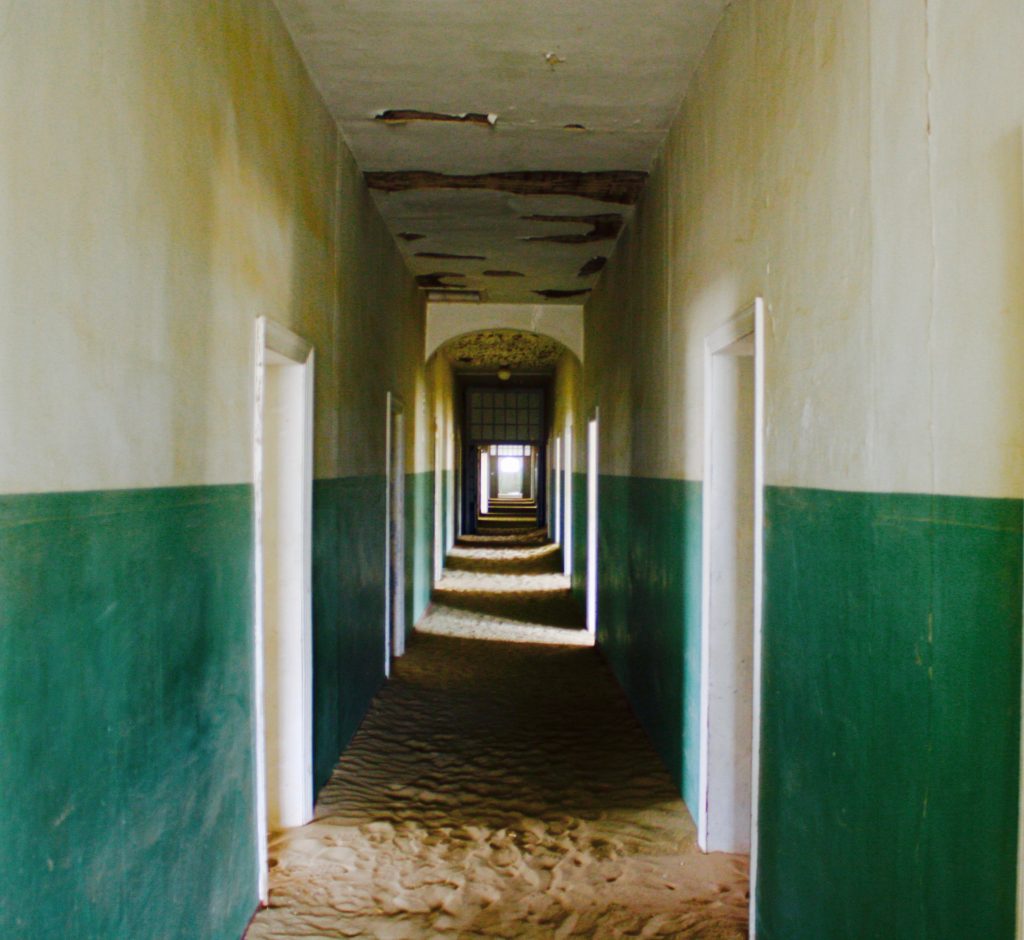
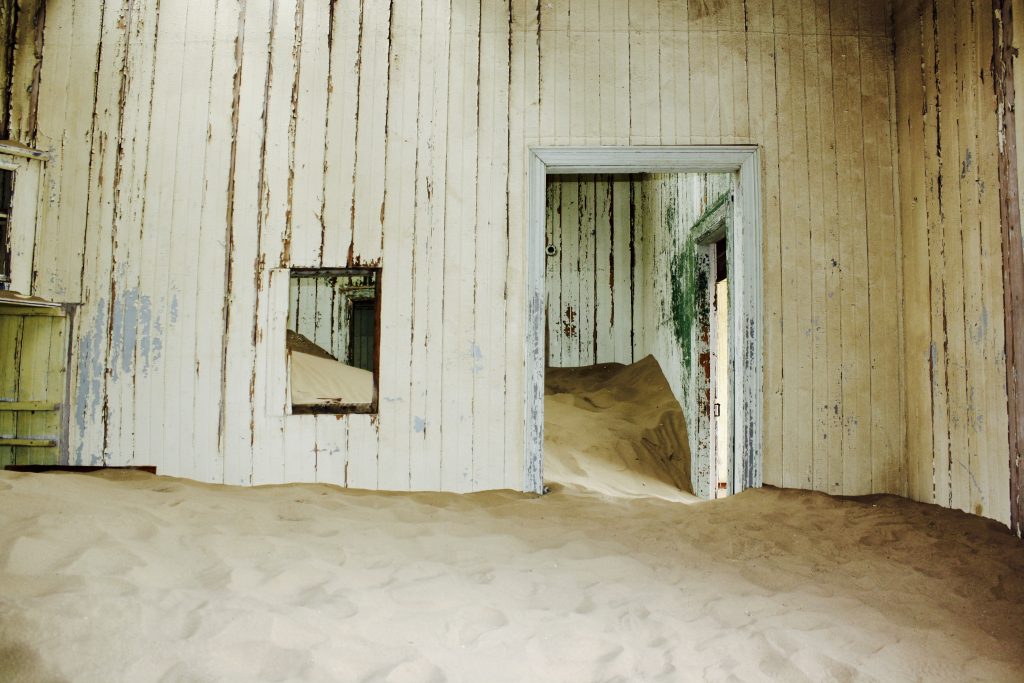


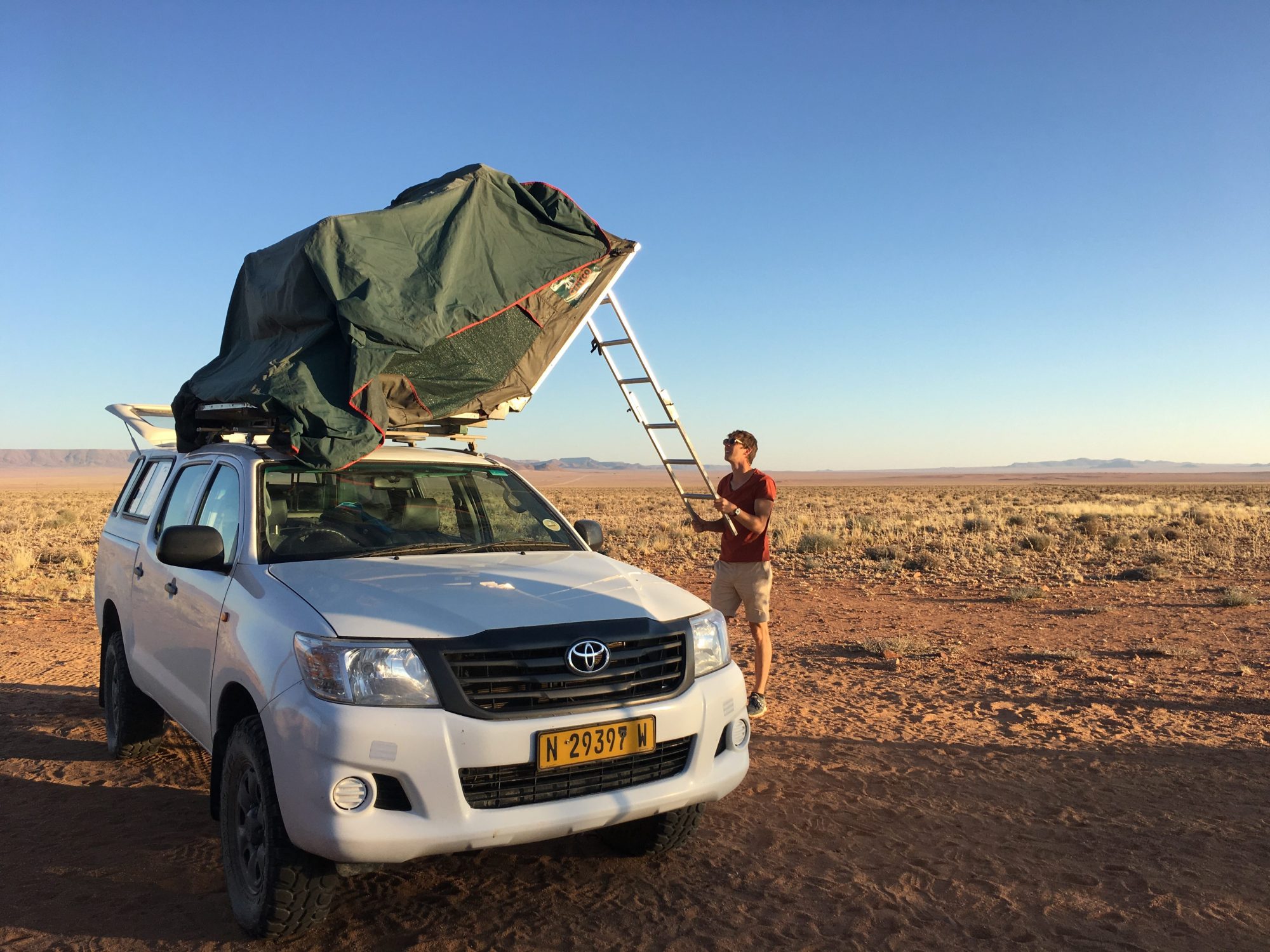
No Comments